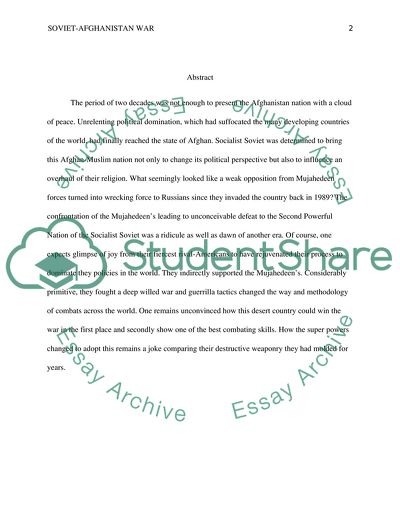Cite this document
(Soviet/Afghanistan War Assignment Example | Topics and Well Written Essays - 1250 words, n.d.)
Soviet/Afghanistan War Assignment Example | Topics and Well Written Essays - 1250 words. https://studentshare.org/history/1774305-sovietafghanistan-war
Soviet/Afghanistan War Assignment Example | Topics and Well Written Essays - 1250 words. https://studentshare.org/history/1774305-sovietafghanistan-war
(Soviet/Afghanistan War Assignment Example | Topics and Well Written Essays - 1250 Words)
Soviet/Afghanistan War Assignment Example | Topics and Well Written Essays - 1250 Words. https://studentshare.org/history/1774305-sovietafghanistan-war.
Soviet/Afghanistan War Assignment Example | Topics and Well Written Essays - 1250 Words. https://studentshare.org/history/1774305-sovietafghanistan-war.
“Soviet/Afghanistan War Assignment Example | Topics and Well Written Essays - 1250 Words”. https://studentshare.org/history/1774305-sovietafghanistan-war.


